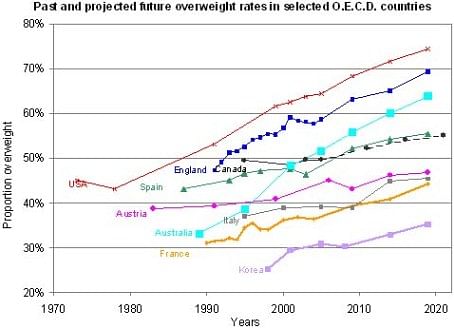OECD Obesity report
OECD: Obesity and the economics of prevention

OECD has published a new report that examines the scale and characteristics of the current obesity epidemic, the respective roles and influences of market forces and governments, and the impact of interventions to tackle obesity.
The report presents for the first time analyses and comparisons of the most detailed data on obesity available from 11 OECD countries. It includes a unique analysis of the health and economic impact of a range of interventions to tackle obesity in 5 countries, carried out jointly by the OECD and the World Health Organization.
Health Ministers will discuss this report when they meet at the OECD on 7-8 October 2010 in Paris.
Obesity is becoming public health enemy number one in most OECD countries.
Severely obese people die 8-10 years sooner than those of normal-weight, similar to smokers, with every 15 extra kilograms increasing risk of early death by approximately 30%. In ten European countries, research shows that obesity doubles the odds being unable to live a normal active life.
Obesity is expensive, and a burden on health systems. Throughout their lives, health care expenditures for obese people are at least 25% higher than for someone of normal weight and increase rapidly as people get fatter. However, the reduction in life expectancy is so great that obese people incur lower health care costs over their lifetime (13% less, according to a Dutch study) than those of normal weight – but more than smokers, on average.
Obesity is estimated to be responsible for 1% to 3% of total health expenditure in most countries (5% to 10% in the United States) and costs will rise rapidly in coming years as obesity-related diseases set in.
What are the trends in obesity – past and future?
Until 1980, fewer than 1 in 10 people were obese. Since then, rates have doubled or tripled and in almost half of OECD countries 1 in 2 people is now overweight or obese. If recent trends continue, projections suggest that more than 2 out of 3 people will be overweight or obese in some OECD countries within th enext 10 years (figure below)

OECD Obesity projections








